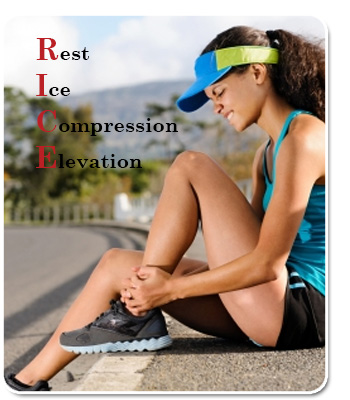A guest at our Orthopedic Symposium asked Dr. Keith Card, Podiatrist at Carson Tahoe Health, “What can be done for a sore tendon in the ankle? It is swollen and painful to walk on. X-ray showed no breakage or damage to bone. I use Aleve and ice. Any suggestions would be great, but I am learning to live with it. Thanks so much!” – Jo S.
Dr. Card’s Response
A sore tendon in the ankle will typically respond to what is known as RICE therapy. It is the acronym for: Rest, Ice, Compression, and Elevation.
For an ankle injury, both the Rest and Compression portion of treatment may be accomplished with a supportive ankle brace. Many sporting goods or drugstores carry several versions of these braces. You should look for one that has laces and non-elastic straps. (The elastic type, while providing some compression are typically not very supportive.) The brace will compress the ankle reducing the swelling and allow the ankle tendons to rest by supporting the ankle from the outside.
Rest also includes limiting the time spent walking or standing on the injured ankle. If you must be on your feet, the ankle brace will reduce the work the tendon must do to support the ankle.
Ice is typically applied in 20 minute intervals. This can be as simple as a bag of frozen vegetables to the affected area. Keeping the ice on for longer than 20 minutes may add frostbite to your list of ankle woes.
Compression may be also be accomplished with compression stockings or “anti-embolism” socks that are sold at drug stores and reduce swelling in the legs and feet. A simple ACE bandage wrapped around the foot and ankle is also an effective method of reducing the swelling.
Elevation involves raising the injured limb to or above the level of the heart. This will allow gravity to help push the extra fluid out of the injured area. While in bed, two pillows are typically sufficient. If seated, an ottoman is not typically high enough but is better than allowing the foot to rest on the floor.
These general guidelines are typically helpful for soft tissue injuries of the ankle. If the pain continues despite several weeks of this therapy then additional treatment may be necessary. It is important to keep in mind that while X-ray will be beneficial for bone problems, the soft tissues such as tendons are not seen. An MRI is a better tool for evaluating an injury to soft tissues or tendons.
One specific ankle tendon, the Tibialis Posterior tendon, if injured and untreated, may slowly stretch over time leading to a collapse of the arch of the foot and can lead to subsequent arthritis.
This blog is not intended to be a substitute for direct professional medial advice diagnosis or treatment. Always seek the advice of your physician or other qualified health care provider to see if this information applies to your unique situation. If your pain does not improve, additional testing and treatment may be beneficial.







